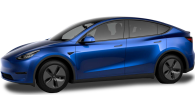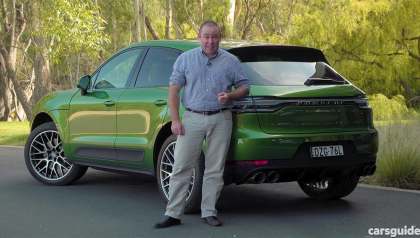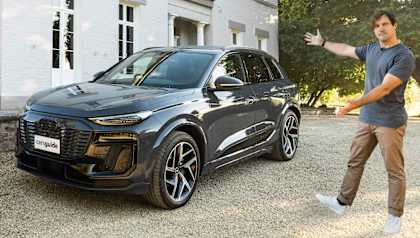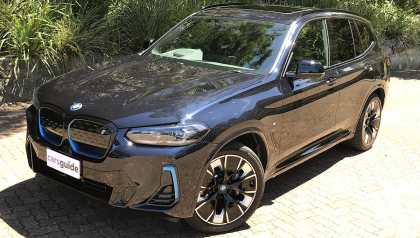I’ve now been driving the Polestar 4 Long range Dual motor (LRDM) for two months and it’s fair to say the fully electric large ‘SUV’ has turned plenty of heads in that time.
There are, of course, a few good reasons why so many people stare at the Polestar 4, all of which are going to be covered in this second instalment of my three-part EV Guide long-term review.
But before I deep-dive the Polestar 4’s design and practicality, if you want to get up to speed with its pricing, features, safety, powertrain, efficiency, warranty and servicing, check out the link to the first instalment directly below.
Now, without further ado, let’s get stuck into part two!
Why doesn’t the Polestar 4 have a rear window?
It’s the million-dollar question. The answer is simple in concept but complicated in its execution.
The story goes that Polestar’s designers decided they wanted the Polestar 4 to be a coupe-style SUV but didn’t want to compromise on second-row headroom, which is so often the case with similar models with swoopy rooflines.
So, the design team made the bold decision to get rid of the Polestar 4’s rear window altogether in order to push back its header rail and, therefore, create a more spacious cabin.
I’ll get to the effectiveness of this move on interior comfort in a moment, but it does, of course, make the role of a traditional rearview mirror redundant. In its place is a ‘digital’ rearview mirror that utilises a rear-facing camera for its live feed.
Now, if you’ve read or watched enough CarsGuide car reviews, you’ll know we’re usually not big fans of digital rearview mirrors, because, while they generally unlock a greater field of vision, they lack depth and perform relatively poorly in low-light conditions.
Ordinarily, digital rearview mirrors can be flicked into a traditional (read: glass) mode and while that is the case with the Polestar 4, it’s only a third vanity mirror in this instance.
The third instalment of this EV Guide long-term review will cover my Polestar 4 driving impressions of the Polestar 4’s digital rearview mirror and general visibility in more detail, so stay tuned for that.
The Polestar 4’s exterior design is equally head-turning
Missing rear window aside, the rest of the Polestar 4’s exterior design is a knockout.
The back end is a masterclass in sleek minimalism, with it otherwise headlined by an LED tail-light bar, which has a captivating animation when it’s powering up or down.

There’s a lot of black plastic in the rear bumper, which usually doesn’t scream ‘premium’, but in this instance the contrast with my test vehicle’s 'Snow' metallic white paintwork is rather nice.
Around the side, the Polestar 4 looks its best, which is good considering the lengths that Polestar’s designers went to give it its ‘uncompromised’ dramatic shape.
Aside from the silhouette itself, the frameless windows and strongly creased bodywork are both gorgeous, including the latter's creased lines and the recessed lower section of its doors. And let’s not forget the full glass roof and obligatory pop-out doorhandles.

A couple of unusual design flourishes are the ‘Polestar 4’ stickers on the bottom of the front doors, and the pronounced side cameras above, which have a significant kink to them.
The Performance pack fitted to my test vehicle comes with 22-inch forged alloy wheels, which have an intricate, bi-colour design. Swedish gold Brembo brake calipers are tucked behind.
Finally, the front end looks muscular thanks to its strong shoulders. Being an EV, there is no grille, let alone an imitation. But it is pinched in this area, with the front bumper below featuring a large air intake to aid airflow.

That said, all the attention goes to Polestar’s latest interpretation of Volvo’s previously signature ‘Thor’s hammer’ headlights. In this instance they’re chunky but split and feature well-defined LED daytime running lights.
The Polestar 4’s interior design is also stunning
There are a few interiors these days that impress me straight away, but the Polestar 4’s is certainly one of them.
Instantly, I was struck by not only its sense of 'premiumness', but also the clear use of alternative materials to achieve that luxury brief.
There are several upholstery and accent options for the Polestar 4, which I won’t get into here, but what I will say is my test vehicle’s seats are primarily trimmed in Mist tailored knit, which is an elevated creamy fabric made of 100 per cent recycled PET bottles. It doesn’t feel too artificial.

The secondary upholstery in my Polestar 4 is a pale green, bio-attributed Microtech vinyl. It covers most other areas of the interior. I must say I appreciate unusual interior colours.
Zinc deco is the accent used in the middle of the dashboard and door cards. The latter features ambient lighting behind, for which there are several options based on the planets in our solar system. How fun!
The upper section of the cabin is darker thanks to the black headliner and dashboard top. And then there’s the black steering wheel, relatively small digital instrument cluster and oversized, floating central touchscreen.
Overall, the design is minimalistic and it’s all the better for it, if you’re asking me. But as always, design is subjective.
Practicality is another Polestar 4 strength – but it’s not perfect
In the first row, you’re immediately greeted by a steering wheel with capacitive touch controls and haptic feedback – yep, it’s ‘free’ of physical buttons. I hopefully don’t need to tell you how much of a misstep that is.
Thankfully, Polestar is also aware of this mistake as the MY26 update for the Polestar 4 ushers in six physical buttons and labels for all positions, which are, bizarrely, partly present in my MY25 test vehicle. Either way, common sense prevailed in the end. Thankfully, the gear selector is column-mounted. Hooray!
The aforementioned central touchscreen to the left is powered by Google’s brilliant Android Automotive multimedia system. It’s so brilliant, in fact, that I’ve barely used wireless Apple CarPlay in my first two months of ‘ownership’. If you know how much of an Apple fanboy I am, you’ll know how big of a deal that is for me!
Point being, having Google Maps as your in-built satellite navigation system is a game changer as you’ll actually use it instead of mirroring your smartphone to get, uh, Google Maps.

Spotify is the baked-in music streaming service, if that’s your flavour, plus you can download other apps via the Google Play store.
Over-the-air updates are also supported and somewhat regular. I’ve received one thus far and it added support for Apple Key, which allows you to leave the key fob at home and use your iPhone and/or Apple Watch to access the vehicle and drive. Pretty nifty stuff!
However, Polestar’s implementation of Android Automotive still occasionally has its bugs. In my experience, they have not been as severe as they have been in the past, but an issue that I have intermittently encountered is the climate control’s ‘sync’ button going MIA.
Which brings me nicely to where this touchscreen interface really starts to become annoying, which is the degree to which you need to use it to operate vehicle functions that otherwise would’ve had physical controls. The power-adjustable side mirrors and steering wheel are the biggest offenders here.
The first-row air vents are adjustable but only via the touchscreen. That said, they do have three modes: focused, diffused and oscillating, all of which are a rarity and nice to have.
While there are no physical climate controls, the touchscreen permanently shows the controls for the temperature, front demister (there is no rear because of the lack of a certain window) and heated front seats and steering wheel. The fan speed can only be manually adjusted via a menu that you need to tap into.
Miscellaneous observations include that the menu shortcuts require a stretch for the driver and they haven't been switched to the right side for right-hand-drive markets like Australia. Also, your selected audio or radio station doesn’t autoplay when the ignition is switched on by putting your left foot on the brake pedal. Annoying!
That said, the sound system is one of the few features that does get physical controls, as there is a dedicated rotary dial for it in the centre console, one which plays, pauses and controls the volume. I’ll take what I can get these days.

As for the rest of the two-tier centre console, in the upper section there’s a single wireless smartphone charger that’s half-concealed and angled downwards for better security.
Behind are two cupholders with a handy retractable cover, while the centre armrest acts as a lid for the central bin that is deep but not long nor wide. It has two handy USB-C ports inside.
The lower tier offers a large open storage area with a bigger tray and a smaller one. An accessory provision is above. It can conveniently add, for example, an additional set of cupholders should you be extra, extra thirsty.
That might not be an issue as the front door bins can each accommodate a regular bottle upright and a small one on its side.
The large glovebox can only be opened via the touchscreen, which is an increasingly common but still nonsensical thing. You might want to use it for your sunglasses, as there is no holder.
The Polestar 4’s second-row practicality amazes
In the second row and behind my 184cm driving position, I have oodles of legroom, owing to the Polestar 4’s long wheelbase (2999mm).
Headroom is also great, with nearly two inches available thanks to Polestar’s bold decision to remove the rear window and, therefore, push back the header rail that would’ve otherwise reduced the space in a vehicle with such a steeply raked roofline.
However, toe room is almost non-existent with the front seats set to their lowest positions.
While there is enough width (2008mm total) to comfortably seat three adults on the rear bench, the outboard seats are bucket style, meaning the middle pew is not flat and, therefore, a little uncomfortable for the unlucky one’s bottom.
There’s also a small hump in the middle of the floor, but it’s not large enough to compromise footwell space.

Amenities-wise, rear passengers are treated to a fold-down armrest that requires a firm pull of a tab to reveal. In my test vehicle, aside from an open tray and pop-out cupholders, its main party trick is physical controls for the power-adjustable recline fcuntion of the 60/40 split-fold seats. Nice.
These adjustments can also be handled via the useful touchscreen at the rear of the centre console. It needs to be used to operate the second-row seat heating as well as the climate and sound system controls.
Below this touchscreen is a further two USB-C ports, while above are two manually adjustable air vents, another pair of which are in the B-pillars for superior ventilation.
Storage nets are affixed to the front seat backrests, while the rear door bins are smaller than their front counterparts, only able to take smaller bottles.
Three top-tether and two ISOFIX anchorage points are on handle for fitting child seats, should you need to.
The Polestar 4 boots and frunks for the better
You can access the boot via its power-operated tailgate. When you do, you're greeted by a commendable 526L of storage space. This can be increased to an even more generous 1536L by stowing the rear bench, an action which can be done via the manual release latches that can be easily reached from behind.
To make the most of the space on offer, you will need to remove the ‘parcel shelf’, which in the Polestar 4 is more a physical barrier between occupants and the boot given the no-rear-window situation. Thankfully, it can easily be stored underneath the false floor, which has a big bin that’s deep enough to easily store a charging cable.
You’ll need to use the false floor if you want the boot to be flat. It will be very uneven otherwise. Either way, the boot lip is chunky, making loading heavier items a little more difficult than you’d probably prefer. At least it’s covered in metal to better withstand impacts.
Bulkier items will also be a challenge when it comes to working around the Polestar 4’s boot aperture, which is not very tall due to its aforementioned swoopy roofline.
At least you get a storage net to the left, with a 12V power outlet next to it. There’s also four tie-down points, two bag hooks and two LED lights but no spare wheel whatsoever. Boo!
Bonus points, though, for the available frunk (or is it froot?). It may be small, at 15L, but it could prove to be very handy – especially if you have wet gear – as it’s all plastic, including its lid.
Real-world driving range is good, not great, in the Polestar 4
In my second month of driving the Polestar 4 LRDM, I averaged 22.2kWh/100km over 1048km of driving, which included a higher mix of highway driving than month one with the same average.
Based on the Polestar 4 LRDM’s 100kWh battery pack, that again equates to a real-world driving range of 450km, which is 30 per cent short of its WLTP claim on the combined-cycle test, one that doesn’t factor in the 22-inch wheel and tyre package fitted to my test vehicle as part of the optional Performance pack.

Either way, that is still a cracking result given the level of performance on offer.
And with that we’ve reached the conclusions of this second instalment in my three-part EV Guide long-term review of the Polestar 4.
As promised, the third and final instalment will cover my detailed driving impressions as well as my all-important final verdict on the Polestar LRDM. Until next time!
Acquired: June 16, 2025
Distance travelled this month: 1048km
Odometer: 7833km
Average energy consumption this month: 22.2kWh/100km
Polestar 4 2026: Long Range Dual Motor
| Engine Type | 0.0L |
|---|---|
| Fuel Type | Electric |
| Fuel Efficiency | 0.0L/100km (combined) |
| Seating | 5 |
| Price From | $88,350 |
| Safety Rating |
|



































































